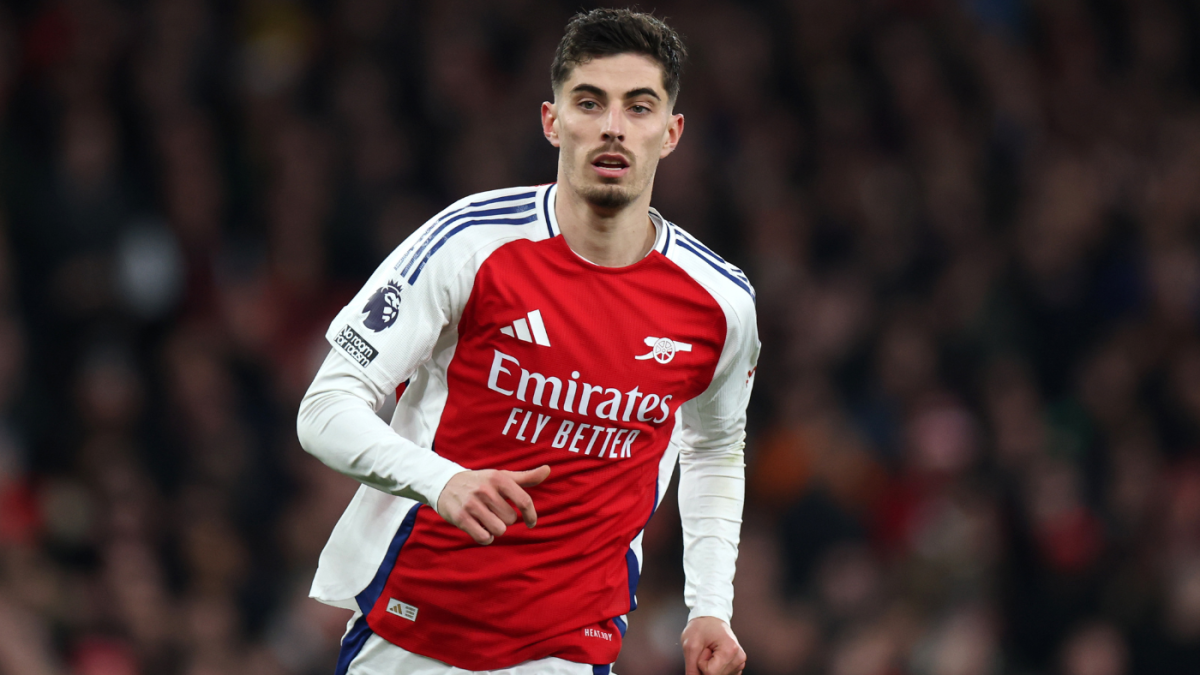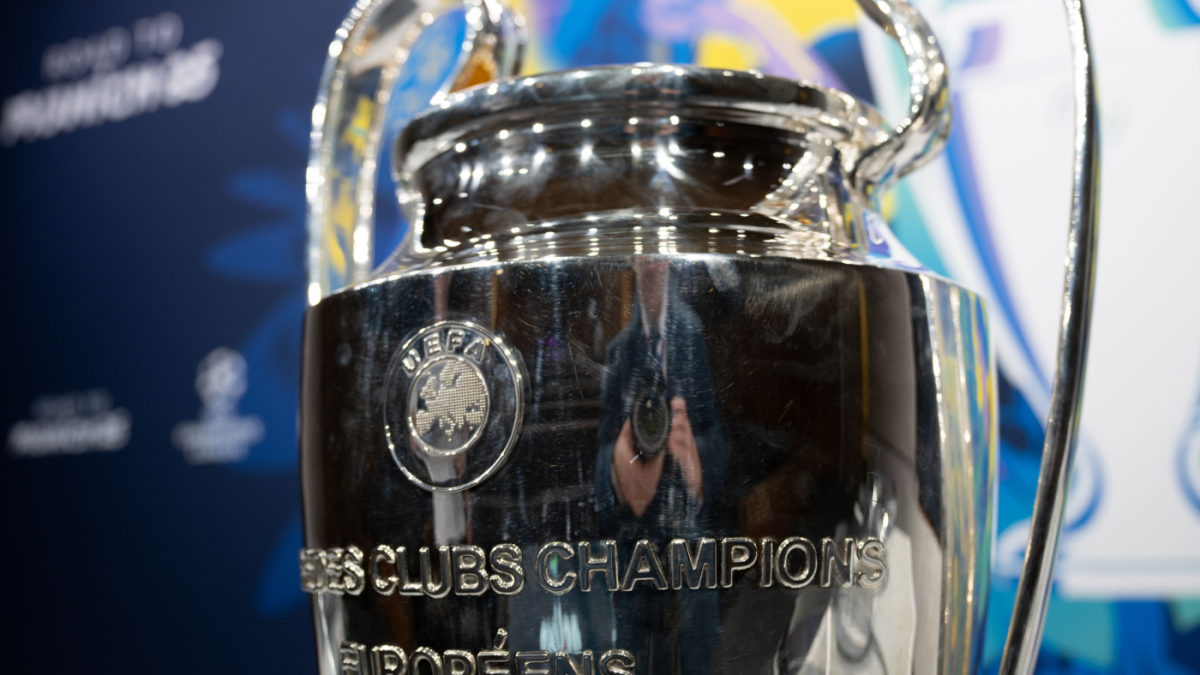 Champions League
Champions League

 Conference League
Conference League

 Premier League
Premier League

Published on Sep, 02 2024

Video Assistant Referee causes controversy every week in the Premier League, but how are decisions made, and are they correct?
After each weekend we take a look at the major incidents, to examine and explain the process both in terms of VAR protocol and the Laws of the Game.
In this week's VAR Review: What happened with Declan Rice's red card against Brighton? Should Matthijs de Ligt have been sent off? And what has happened to handball penalties?
Arsenal 1-1 Brighton Possible red card: Veltman challenge on Rice
What happened: Declan Rice tangled with Joël Veltman by the corner flag in the 49th minute, with referee Chris Kavanagh giving a free kick to Brighton & Hove Albion. Veltman moved the ball forward, and it rebounded off Rice's heel. Rice then tapped the ball away and Veltman, who was looking to play a quick long pass, caught the Arsenal player with his follow through. Rice, who was already on a caution, was shown a second yellow card and sent off for delaying the restart, but no action was taken against Veltman. It was looked at by the VAR, Andy Madley.
VAR decision: No red card.
Declan Rice is sent off by referee Chris Kavanagh. Nick Potts/PA Images via Getty Images
VAR review: It was the talking point of the weekend, and while it might appear to be a harsh decision, Rice left the referee with little choice. While his second booking alone cannot be reviewed through VAR the situation as a whole is worth discussing.
The VAR check was for a possible red card for serious foul play, due to the way Veltman kicked through on Rice. This was a quick look from Madley because there wasn't the force or brutality required for a red card, but you could argue he should have been booked because he surely could have avoided kicking the Arsenal midfielder.
Kavanagh made it clear to the players he had seen what Rice had done, motioning that the Arsenal player had kicked the ball away and off the field.
Kicking the ball away in itself isn't an automatic cautionable offence, it's the impact -- delaying the taking of a restart -- which determines any sanction. You will often see players tap or kick the ball away in set-piece situations, but if the referee deems this didn't prevent a quick restart then they won't take further action.
Rice was guilty of "kicking or carrying the ball away, or provoking a confrontation by deliberately touching the ball after the referee has stopped play," and can have no complaints -- which he has admitted.
So, why was Rice sanctioned while Brighton's Joao Pedro escaped a yellow card for doing the same thing in the 18th minute? It comes down to that judgement on delaying the restart, even if Pedro's actions look to be far more deliberate -- he kicked the ball up the field after it had gone out for a throw.
The referee decided that the ball had run out of play, and there wasn't an Arsenal player within the vicinity to take a quick throw-in. The ball was about to run to Arsenal boss Mikel Arteta, though he was way outside of his technical area and shouldn't even have been in that position to collect it. With Veltman, he was ready to take the restart when Rice touched the ball.
Pedro's offence would have been comparable if he'd kicked the ball away as an Arsenal player was about to pick it up.
Would Pedro have been booked if the incidents had happened in reverse order? It's highly likely and that comes down to game management and the associated circumstances. Yet to fans, Pedro booting the ball away seems a far clearer offence than Rice tapping it and getting sent off.
Another issue with the Rice incident is that ball might have been moving when Veltman was about to take the free kick, which would have been an illegal restart, but no one can know if the ball would have stopped rolling because Rice's act removed that possibility.
The only way Rice's second yellow could have been removed is if the VAR sent the referee to the monitor for a red card for Veltman, and the referee reassessed the whole situation. Once sent to the monitor the referee is in control of all disciplinary outcomes, though in this case Rice's booking would have remained in place as it was a clear cautionable offence.
Possible penalty: Handball by Dunk
What happened: Ben White attempted a shot on goal in the 11th minute, with the ball hitting the arm of Lewis Dunk before it went behind for a corner. Was there a case for a penalty?
VAR decision: No penalty.
VAR review: Dunk had his arm close to his body and made no movement towards the ball. We'll touch more on handball penalties in the Premier League later.
Man United 0-3 Liverpool Possible offside: Salah on Alexander-Arnold goal
What happened: Liverpool thought they had taken the lead in the sixth minute when Trent Alexander-Arnold scored from a cut-back by Luis Díaz. As the players celebrated the goal, the VAR, John Brooks, checked for a possible offside.
VAR decision: Goal disallowed.
VAR review: It's a common misconception that a player cannot be offside if the ball is played backwards, because 99% of such situations come from the ball being played forward.
Yet the direction of the pass is irrelevant for offside, be it forwards, square or backwards. All that matters is the position of the attacking player relative to the second-last opponent or the ball.
If the attacker is in front of the second-last opponent, they must be behind the ball -- which is why Alexander Isak's winning goal for Newcastle United against Tottenham Hotspur wasn't disallowed. If Isak had been in front of the ball he would have been offside, regardless of how the pass was played.
As Salah touched the ball before it ran to Alexander-Arnold it's an automatic offside offence. If he'd made no attempt to touch it the goal would likely have stood because he had no direct impact upon an opponent.
What happened: Matthijs de Ligt was booked in the 65th minute for a late challenge on Díaz, but was there enough in it for a red card for serious foul play?
VAR decision: No red card.
VAR review: De Ligt's tackle was just about the right side of the line to avoid a red card, though he took a huge risk by coming in at pace.
The Netherlands international probably avoided an issue because he only led with one foot and wasn't challenging directly into the opponent, but it was small margins.
Possible penalty: Mazraoui challenge on Gakpo
What happened: Cody Gakpo went down on the edge of the area in the 89th minute in a tussle with Noussair Mazraoui, with Darwin Núñez then firing a shot over the bar. Referee Anthony Taylor signalled he had played advantage when the ball went out. The VAR checked for a possible penalty.
VAR decision: No penalty.
VAR review: Should advantage be played on a penalty situation, and why wasn't it pulled back by the VAR if the referee had judged a foul but got the positioning wrong?
A referee should never play advantage on a penalty unless there is a very clear and immediate opportunity to score. So, based on that, Taylor must have decided the foul contact was just outside the box.
It then becomes a question of protocol. If the referee identified a foul, but that foul was actually inside the area, shouldn't the VAR be passing this information on?
Once Liverpool hadn't made the most of the advantage, the VAR will not go back to assess a judgement the referee has already made.
It does beg the question what the VAR was actually checking ... It might have been the nature of the contact (for example, a possible red card) rather than it being a foul.
If the VAR did get involved it could have created a situation whereby they had to award a penalty factually on position, but didn't believe it was a foul (Gakpo initiating contact.) That would have meant sending Taylor to the monitor to overturn his subjective judgement of a foul, even though he never actually gave a spot kick in the first place. That's like what happened in Brentford vs. Brighton last season, when the ref went to the screen but no spot kick was awarded as there was an attacking foul immediately before the defensive infringement.
Nottingham Forest 1-1 Wolves Possible penalty: Handball by Strand Larsen
What happened: Nottingham Forest were on the attack in the 44th minute when Morgan Gibbs-White crossed to the far post to Chris Wood, but the ball touched the arm of Jørgen Strand Larsen. Wood asked for a penalty and it was checked by the VAR, Michael Salisbury.
VAR decision: No penalty.
VAR review: At the start of the season, the Premier League made it clear that players would have far more leeway when it came to their arms and the expected position relative for movement, so we should see fewer handball penalties through VAR in English football.
Strand Larsen had his back to the flight of the ball as he positioned himself to challenge Wood. While there was a movement of the arm this was to get into position and the Wolverhampton Wanderers player couldn't have been aware the ball was dropping at that exact moment.
This is likely to be penalised in some other top European leagues and the Champions League, but the Premier League is determined to get the handball law back to a position where players only give penalties away where they have taken a risk or committed a clear and deliberate act.
Possible penalty: Handball by Wood
What happened: A free kick was delivered into the Forest penalty area in the 75th minute. Craig Dawson was up for set piece and being marked by Wood. As the ball dropped it hit the arm of the Forest player, so was there a case for a spot kick here?
VAR decision: No penalty.
VAR review: There are striking similarities between this incident and the claim Forest had earlier in the match.
Like Larsen, Wood's arm was moving but that is to be expected for the way he was challenging an opponent. Wood also has his back to the play and can't be aware of where the ball was dropping.
Let's hope handball remains consistent in such situations.
Leicester 1-2 Aston Villa Possible goal: Vardy
What happened: Harry Winks played the ball through the middle in the 58th minute to Oliver Skipp, but it hit referee David Coote on the way, then Skipp passed to Jamie Vardy to score. However, Coote had already stopped the game before the goal.
VAR decision: No intervention possible.
VAR review: The VAR can't get involved here, but there's a distinction in this law which is worth a short explanation.
Leicester City fans were annoyed because at another point in the game the referee didn't stop play when the ball touched him, but this is only necessary if the deflection sets up an attack or leads to a change of possession. If the ball stays with the same team in a non-threatening area, there's no need to stop play.
The deflection off Coote had a huge influence on the "goal," as it took the ball away from Villa's Amadou Onana who was in position to intercept and caused it to run through to Skipp. Onana immediately appealed when the ball touched the referee, and there was no option but to stop the play.
Editors Top Picks







